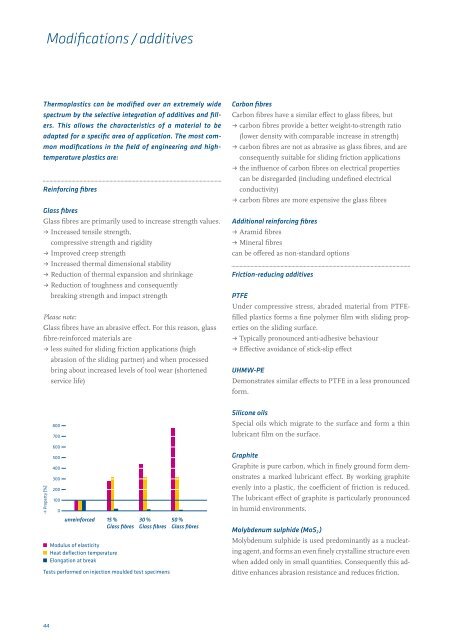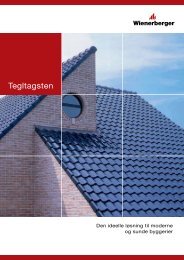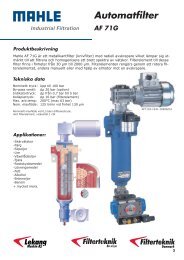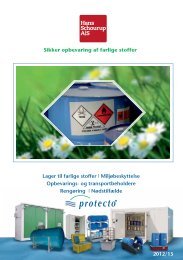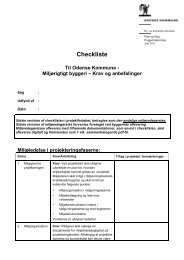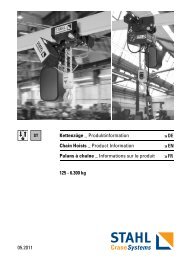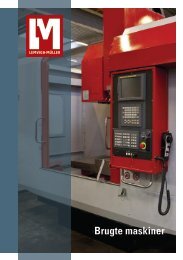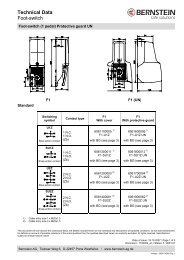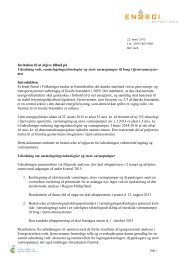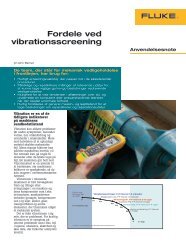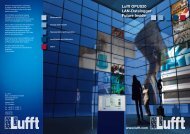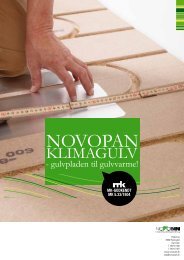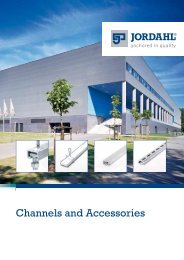Engineering plastics â The Manual - F.wood-supply.dk
Engineering plastics â The Manual - F.wood-supply.dk
Engineering plastics â The Manual - F.wood-supply.dk
Create successful ePaper yourself
Turn your PDF publications into a flip-book with our unique Google optimized e-Paper software.
Modifications / additives<br />
<strong>The</strong>rmo<strong>plastics</strong> can be modified over an extremely wide<br />
spectrum by the selective integration of additives and fillers.<br />
This allows the characteristics of a material to be<br />
adapted for a specific area of application. <strong>The</strong> most common<br />
modifications in the field of engineering and hightemperature<br />
<strong>plastics</strong> are:<br />
Reinforcing fibres<br />
Glass fibres<br />
Glass fibres are primarily used to increase strength values.<br />
ˌˌIncreased tensile strength,<br />
compressive strength and rigidity<br />
ˌˌImproved creep strength<br />
ˌˌIncreased thermal dimensional stability<br />
ˌˌReduction of thermal expansion and shrinkage<br />
ˌˌReduction of toughness and consequently<br />
breaking strength and impact strength<br />
Please note:<br />
Glass fibres have an abrasive effect. For this reason, glass<br />
fibre-reinforced materials are<br />
ˌˌless suited for sliding friction applications (high<br />
abrasion of the sliding partner) and when processed<br />
bring about increased levels of tool wear (shortened<br />
service life)<br />
Carbon fibres<br />
Carbon fibres have a similar effect to glass fibres, but<br />
ˌˌcarbon fibres provide a better weight-to-strength ratio<br />
(lower density with comparable increase in strength)<br />
ˌˌcarbon fibres are not as abrasive as glass fibres, and are<br />
consequently suitable for sliding friction applications<br />
ˌˌthe influence of carbon fibres on electrical properties<br />
can be disregarded (including undefined electrical<br />
conductivity)<br />
ˌˌcarbon fibres are more expensive the glass fibres<br />
Additional reinforcing fibres<br />
ˌˌAramid fibres<br />
ˌˌMineral fibres<br />
can be offered as non-standard options<br />
Friction-reducing additives<br />
PTFE<br />
Under compressive stress, abraded material from PTFEfilled<br />
<strong>plastics</strong> forms a fine polymer film with sliding properties<br />
on the sliding surface.<br />
ˌˌTypically pronounced anti-adhesive behaviour<br />
ˌˌEffective avoidance of stick-slip effect<br />
UHMW-PE<br />
Demonstrates similar effects to PTFE in a less pronounced<br />
form.<br />
• Property [%]<br />
800<br />
700<br />
600<br />
500<br />
400<br />
300<br />
200<br />
100<br />
0<br />
unreinforced 15 %<br />
Glass fibres<br />
Modulus of elasticity<br />
Heat deflection temperature<br />
Elongation at break<br />
30 %<br />
Glass fibres<br />
Tests performed on injection moulded test specimens<br />
50 %<br />
Glass fibres<br />
Silicone oils<br />
Special oils which migrate to the surface and form a thin<br />
lubricant film on the surface.<br />
Graphite<br />
Graphite is pure carbon, which in finely ground form demonstrates<br />
a marked lubricant effect. By working graphite<br />
evenly into a plastic, the coefficient of friction is reduced.<br />
<strong>The</strong> lubricant effect of graphite is particularly pronounced<br />
in humid environments.<br />
Molybdenum sulphide (MoS 2 )<br />
Molybdenum sulphide is used predominantly as a nucleating<br />
agent, and forms an even finely crystalline structure even<br />
when added only in small quantities. Consequently this additive<br />
enhances abrasion resistance and reduces friction.<br />
44


